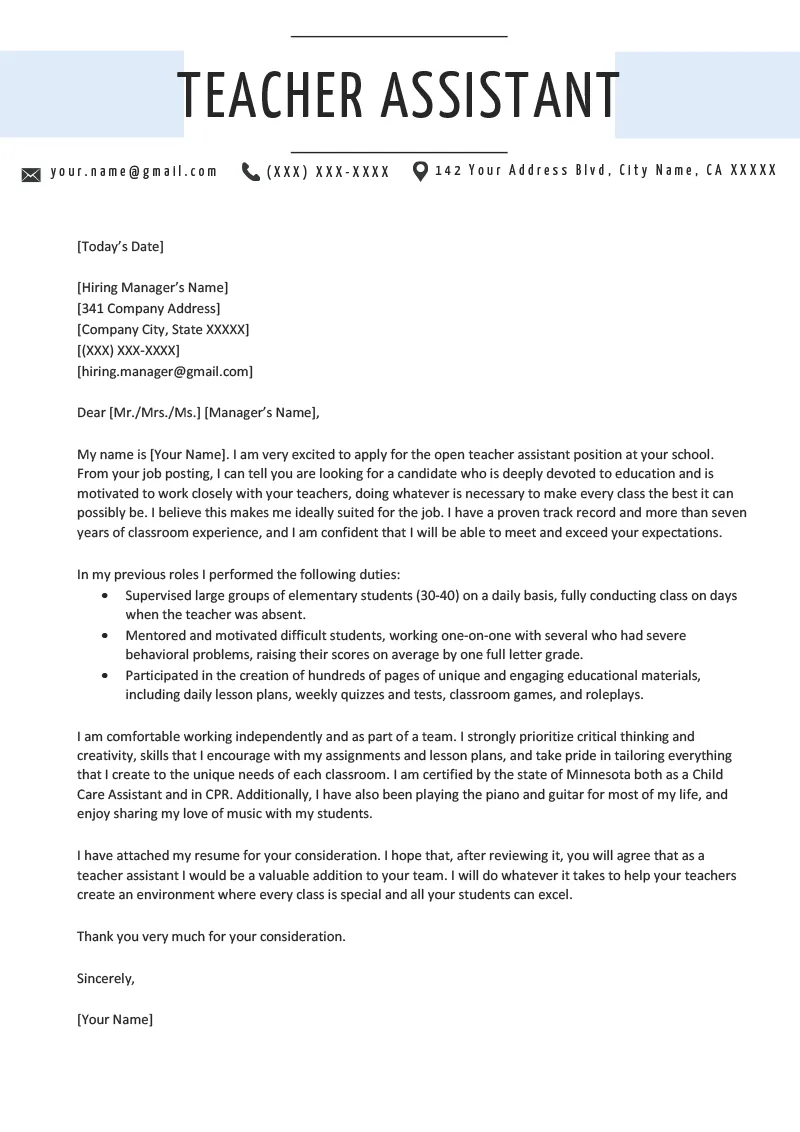Why Cover Letters Matter for Teaching Jobs
In the competitive world of education, a well-crafted cover letter can be your key to unlocking your dream teaching position. Many candidates overlook the importance of a cover letter, but it serves as your first impression, allowing you to introduce yourself and highlight your qualifications in a way that a resume alone cannot. It’s your chance to connect with the hiring manager on a personal level and demonstrate your passion for teaching. A strong cover letter is not just a formality; it’s a powerful tool that can significantly increase your chances of landing an interview.
Importance of a Cover Letter
The cover letter provides context to your resume. It allows you to explain career gaps, address specific requirements of the job description, and showcase your personality and teaching philosophy. This document allows you to show how your skills and experience align with the school’s values and the specific needs of the students. A well-written letter shows you’ve done your research, understand the school’s mission, and are genuinely interested in the opportunity. It is the perfect opportunity to expand on what you want to highlight in your resume, which will set you apart from other applicants.
What to Include in a Cover Letter
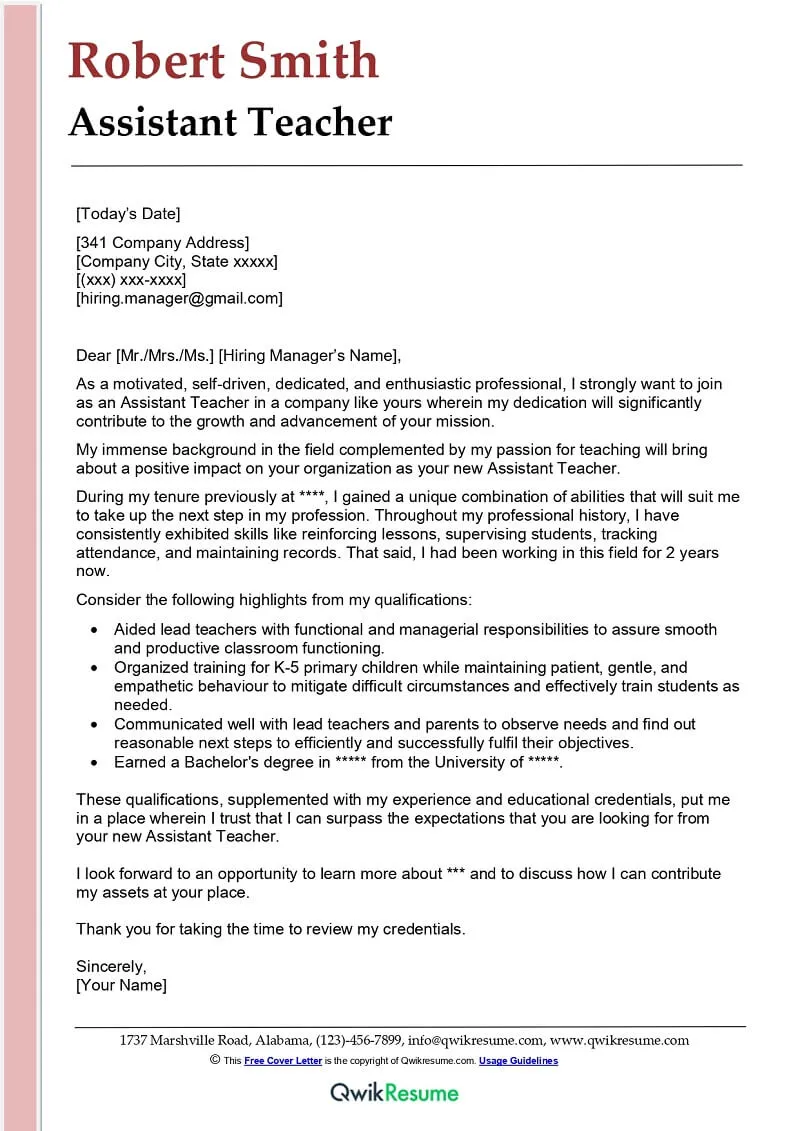
A compelling cover letter typically starts with a strong opening, grabbing the reader’s attention. Clearly state the position you are applying for and where you found the job posting. In the body paragraphs, highlight relevant experiences and achievements using specific examples. Quantify your accomplishments whenever possible, showing how you have made a positive impact in the past. Your personality should shine through the writing while being concise and professional. Your teaching philosophy and values are important. Finally, express your enthusiasm for the role, and include a call to action, inviting the hiring manager to review your resume and contact you for an interview. Be sure to maintain professionalism and proofread for any mistakes.
Top 5 Teaching Job Cover Letter Examples
Example 1 Elementary Teacher Cover Letter
An elementary teacher cover letter should focus on your ability to engage young learners, create a nurturing classroom environment, and differentiate instruction to meet diverse needs. You must showcase your understanding of child development and your ability to foster a love of learning in students. Include examples of how you have implemented engaging lesson plans, managed classroom behavior, and communicated effectively with parents. Emphasize your experience with specific educational programs or technologies and how these have improved student outcomes. Focus on examples of fostering curiosity and enthusiasm.
Key Elements of the Elementary Cover Letter
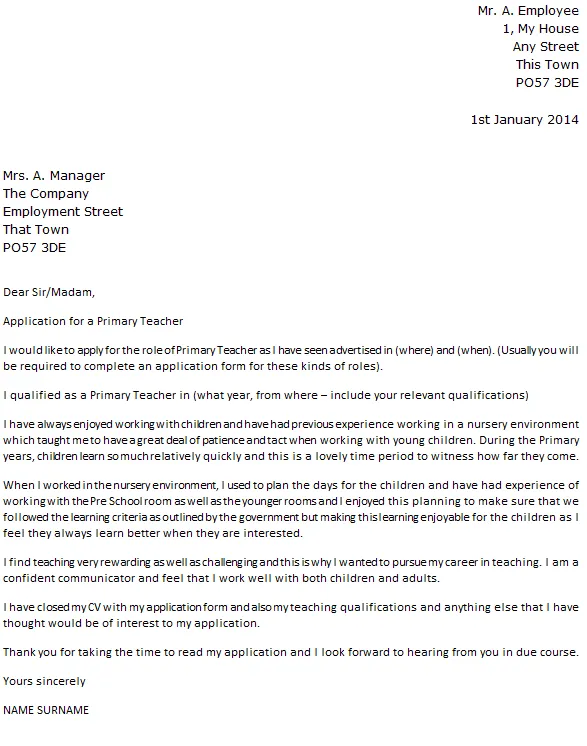
- Enthusiasm for teaching young children
- Experience with early childhood education methodologies
- Ability to create a fun and safe learning environment
- Excellent communication skills with both students and parents
- Proven ability to manage and organize a classroom
Example 2 High School Teacher Cover Letter
A high school teacher cover letter must demonstrate your ability to teach specific subject matter and engage older students. Highlight your understanding of curriculum development, assessment strategies, and classroom management techniques suitable for adolescents. Include examples of how you have fostered critical thinking, promoted student participation, and prepared students for college or careers. Focus on your ability to connect with teens and make your subject engaging. Detail any experience with extracurricular activities, mentoring, or supporting student development beyond academics.
Key Aspects of the High School Cover Letter
- Subject-matter expertise and relevant certifications
- Experience in curriculum development and lesson planning
- Ability to manage classroom dynamics effectively
- Experience in helping students succeed academically
- Skills in mentoring and supporting student growth
Example 3 Special Education Teacher Cover Letter
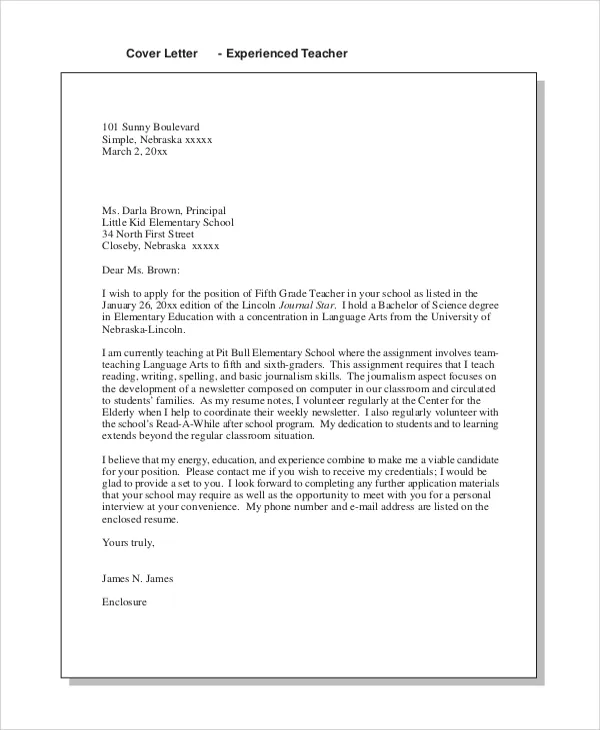
A special education teacher cover letter should highlight your empathy, patience, and ability to adapt teaching methods to meet the diverse needs of students with disabilities. Emphasize your knowledge of Individualized Education Programs (IEPs), your experience in creating inclusive classrooms, and your commitment to helping students reach their full potential. Provide examples of how you have collaborated with parents, therapists, and other professionals to support student success. Your letter should show your ability to advocate for students and navigate the complexities of special education regulations.
Special Education Cover Letter Highlights
- Experience in working with students with disabilities
- Knowledge of IEPs and special education regulations
- Collaborative skills in working with support staff
- Strong communication skills with parents and guardians
- A passion for advocating for students with special needs
Example 4 Substitute Teacher Cover Letter
A substitute teacher cover letter needs to emphasize your flexibility, adaptability, and ability to manage classrooms with varying age groups and subjects. Highlight your classroom management skills, your ability to quickly adapt to different teaching styles, and your commitment to maintaining a positive learning environment. Mention your experience with various grade levels and your capacity to follow lesson plans effectively. Showcase any experience in dealing with challenging student behaviors and your ability to provide support for the regular teacher’s work. Always show that you are reliable and able to be a team player.
Substitute Teacher Cover Letter Essentials
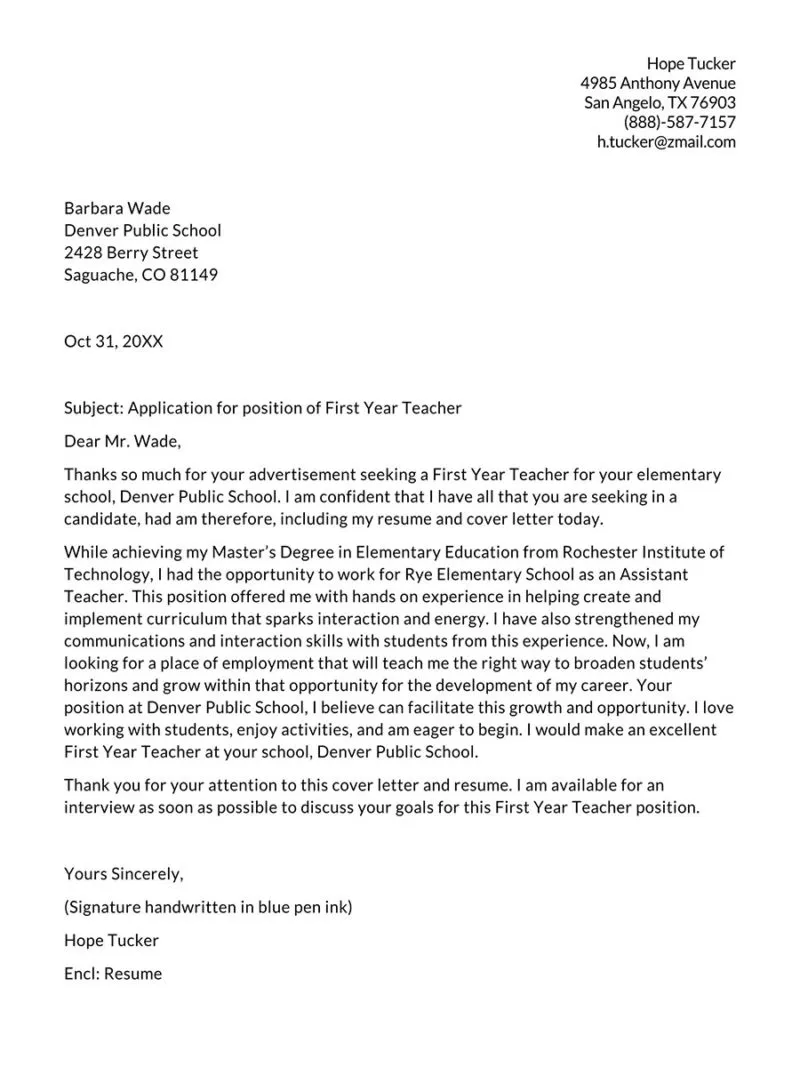
- Flexibility and adaptability to different classroom environments
- Classroom management skills to maintain order
- Ability to implement lesson plans efficiently
- Communication skills to work with students and staff
- Professionalism and reliability in any situation
Example 5 Preschool Teacher Cover Letter
A preschool teacher cover letter must convey your enthusiasm, creativity, and ability to provide a nurturing and stimulating learning environment for young children. Showcase your knowledge of early childhood development, your experience in planning age-appropriate activities, and your ability to engage children through play and exploration. Provide examples of how you have created a safe, fun, and interactive classroom environment. Highlight your communication skills with parents and your ability to foster a strong home-school connection. Emphasis on your experience with various age groups. This is key to your success as a preschool teacher.
Preschool Teacher Cover Letter Components
- Enthusiasm and passion for working with young children
- Experience in planning and executing age-appropriate activities
- Ability to create a safe and nurturing environment
- Strong communication skills with parents and guardians
- Knowledge of child development principles and best practices
Tips for Personalizing Your Cover Letter
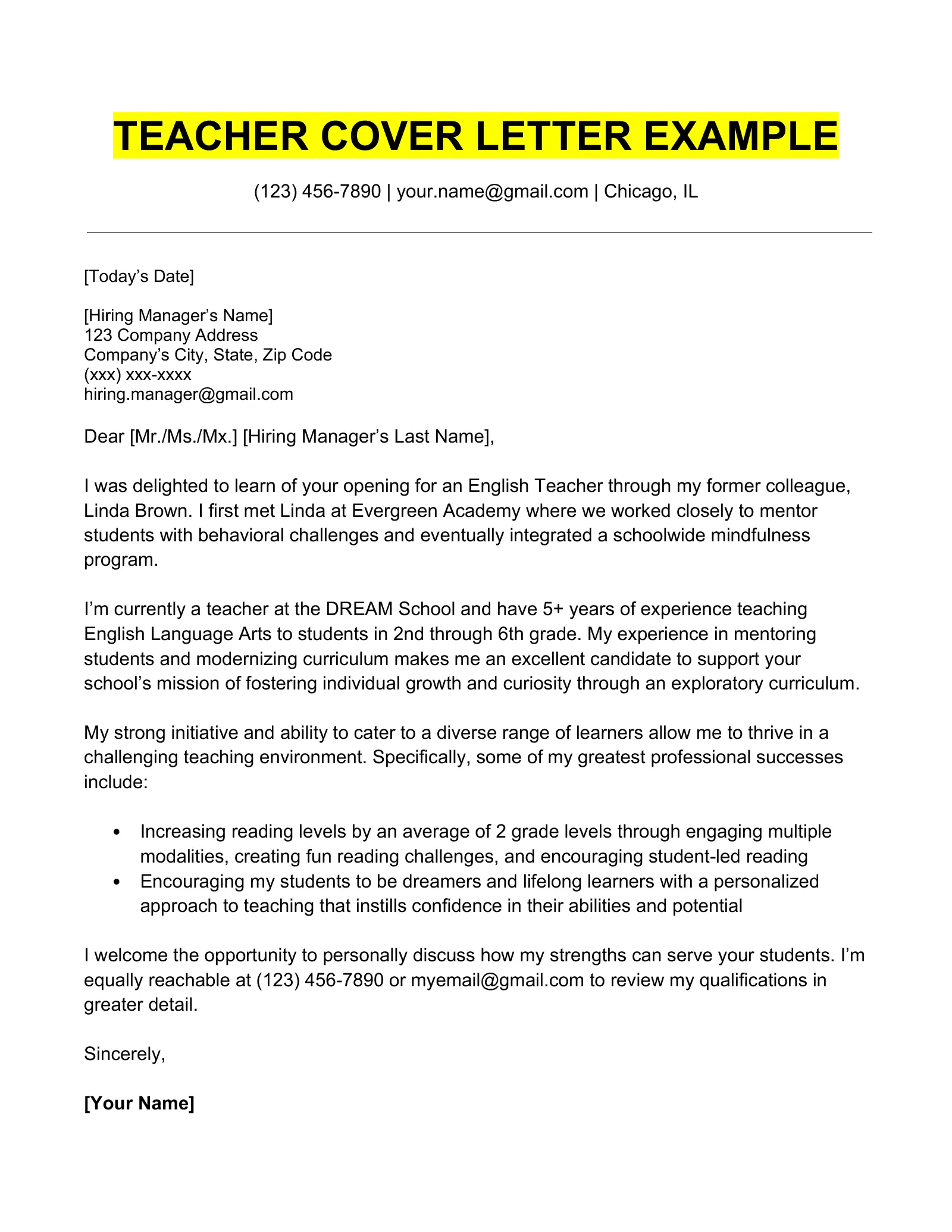
Tailoring to the School and Position
Every teaching position is unique, and your cover letter should reflect that. Research the school’s mission, values, and any specific initiatives they are focused on. Address the key requirements and preferences outlined in the job description, and explicitly state how your skills and experience align with those needs. Customize your letter to each application, demonstrating that you are genuinely interested in that particular role and school. This attention to detail shows your commitment and increases your chances of success.
Highlighting Relevant Skills and Experience
Focus on the most relevant skills and experiences that match the job requirements. Instead of simply listing your qualifications, provide specific examples of how you have used those skills to achieve positive outcomes in previous roles. Quantify your achievements whenever possible by using numbers or data to show the impact of your work. Use action verbs to describe your accomplishments and responsibilities. Use the STAR method (Situation, Task, Action, Result) to structure your examples. This will help to show what you have accomplished and will show how those achievements are useful to the prospective school.
Cover Letter Formatting and Presentation
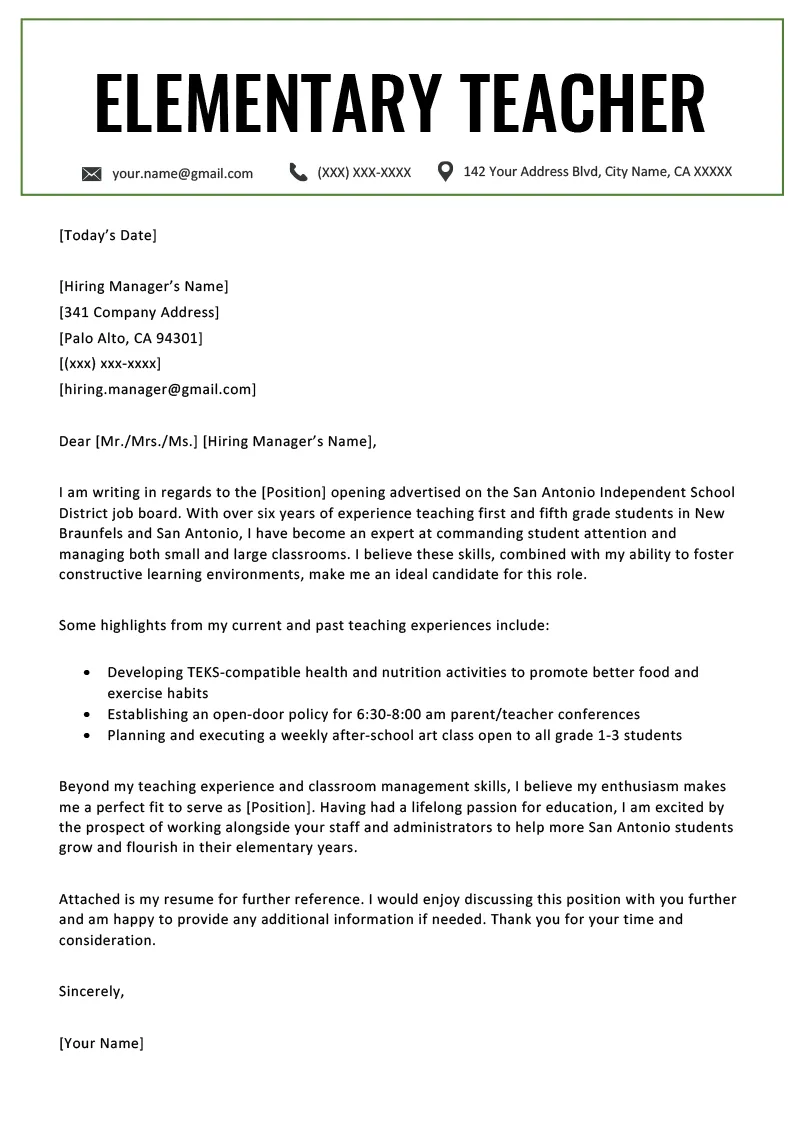
Formatting Guidelines
A well-formatted cover letter is easy to read and visually appealing. Use a professional font like Times New Roman, Arial, or Calibri, with a font size between 10 and 12 points. Maintain a consistent format throughout the document with clear headings, bullet points, and ample white space. Keep your letter concise, aiming for one page maximum. Ensure your contact information is accurate and prominently displayed. Use appropriate salutations and closings, addressing the hiring manager by name if possible. Use a professional tone, and use high-quality paper if submitting a hard copy. Be sure to adhere to these and the other formatting guidelines.
Proofreading and Editing Your Cover Letter
Before submitting your cover letter, proofread it carefully for any errors in grammar, spelling, and punctuation. Read the letter aloud to catch any awkward phrasing or sentences. Consider having a friend, family member, or career counselor review your cover letter for feedback. Ensure your letter is free of typos and errors. A polished, error-free cover letter reflects your attention to detail and your professionalism, making a positive impression on potential employers. Proofread carefully and ensure you are ready to make a good impression.
